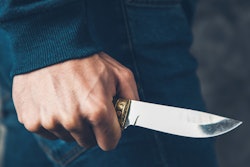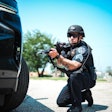![[|CREDIT|]](https://img.policemag.com/files/base/bobit/publicsafety/image/2022/04/pm.gettyimages-177002997-patrisyu.jpg?auto=format%2Ccompress&fit=max&q=70&w=400)
When people in the 21st Century think of martial arts, they probably think first of MMA (mixed martial arts) popularized by UFC events on pay-per-view, but the practice of martial arts dates back thousands of years to some of the earliest human civilizations. The art of Shuai jiao (Chinese wrestling) is said to have existed in China as far back as 2,690 BC, for example.
Today, there are many estimates on the number of people in the United States who practice some form or martial arts such as judo, jujitsu, taekwondo, karate, and others. According to the American Orthopedic Society for Sports Medicine—probably a pretty reliable barometer for such a measurement—there are an estimated 8 million participants in the arts at some level or another.
Included in this group are an unknown number of resistive subjects with some level of skill in these arts—some aptitude learned in a traditional gym, some ability obtained behind bars—who are at times are creating potential problems for arresting officers.
Whether in response to this evolving threat or through individual interest, law enforcement officers are increasingly seeking proficiency in some manner of martial art. Let’s briefly examine some of the many advantages of martial arts provides police professionals.
Direct Advantages
Some of the obvious benefits to participating in any form of martial art are the increased fitness and flexibility one gains. Physical movements of even the most mundane, ordinary tasks become more precise, almost to the point of appearing effortless.
In addition to the physical results, martial arts also impart the psychological effect of enhanced self-awareness and self-assuredness. There is a quiet calm often found in people who have mastered a martial art.
“Any longterm hobbyist or professional martial arts artist is probably going to tell you that there’s a comradery almost like a fraternal thing,” says Fletch Fuller, a third-degree black belt in Brazilian jiu-jitsu and a former military police sergeant and squad leader in the U.S. Army.
“You develop a bond with people—your training partners—who become your friends because you you’re sweating and you’re bleeding together. You’re learning stuff that you think is hopefully going to help you either protect yourself or protect your loved ones,” Fuller adds.
Dan Marcou, a 33-year career law enforcement officer and a master instructor for the State of Wisconsin, holds black belts in Chung Do Kwan taekwondo and Kyuki Do taekwondo and has many years of study in numerous other martial arts forms. “There’s a certain kind of confidence that comes from knowing how to handle yourself, and the bad guys see that on the street. They look at you and say, ‘That guy knows what he is doing,’” he says.
Marcou contends that the enhanced physical abilities achieved with martial arts prowess sometimes mitigates or eliminates the potential for excessive force. “There’s not a lot of excessive force because it takes less effort when you are focused with your technique,” he says. “That’s what comes out of it—focus, speed, strength, flexibility.”
Duane Wolfe, an eighth-degree black belt in Matsumura Kenpo Karate and a 34-year veteran of law enforcement, notes that martial arts ability can be enormously helpful when an officer is not able to quickly access those tools on their duty belt. “You’d better have something in the bag in order to deal with that situation—to the best of your ability—until you can access those tools in order to take the suspect into control and custody,” he says.
Doing it Right
As with any police training, the most critical element is ensuring that it is done correctly from the outset and carried out faithfully thereafter. It must have a level of realism and practical application that mirrors what is likely to happen in the real world.
“Regardless of the art that you study, there has to be a certain level of reality,” Wolfe says. “There’s no better way to pull off the veil over your eyes regarding your training than the first time you get into a real fight where the other person is actually trying to really hurt you.”
Wolfe adds, “For any martial art to be a complete martial art, it has to involve striking. It has to involve throws, takedowns, and arm bars because that’s what cops do. There are going to be times when you have to strike people and when you have to take people to the ground. So my advice is to have a well-rounded foundation in those techniques.”
Marcou adds, “You need to learn how to fall—you need to train to take a fall,” Marcou says. “You can go into any martial arts studio and find people who train all the time realistically falling. They learn how to properly take a fall intraining.”
“If it’s going to be a worthwhile program,” Fuller says, “it needs to be something that is interactive. That means it’s got be done with another living person. That precludes using a mannequin or anything like that. It needs to be a living, breathing body.”
Fuller adds that at some point the training must include the element of a variety of weapons, which are either on the officer’s duty belt or in the hands of an assailant. “That could be a rubber knife that could be a rubber gun,” he says. “It doesn’t have to be done all the time, but at least it needs to be there in a law enforcement officer’s martial arts training to where you’re able to make that jump and make thattransition.”
Down for the Count
If an officer is in a confrontation with someone who is employing the skills of a martial artist, that officer should be using a fighting skill other than martial arts—the credo “If you’re in a fair fight you’re doing it wrong” applies here.
In the octagon and the dojo, there are rules, and officials, and notes jotted on a scorecard.
On the street, there are victors and there are victims.
Doug Wyllie is a contributing editor for POLICE.
















